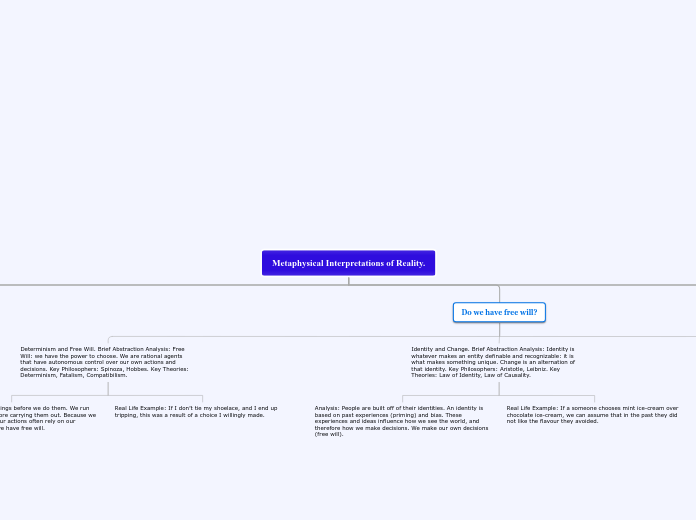by Hania Amir 5 years ago
291
Organigram
The exploration of metaphysical interpretations of reality delves into the core questions about free will, identity, and change. Identity is defined as the unique aspect that makes an entity recognizable, while change refers to the alteration of that identity.









